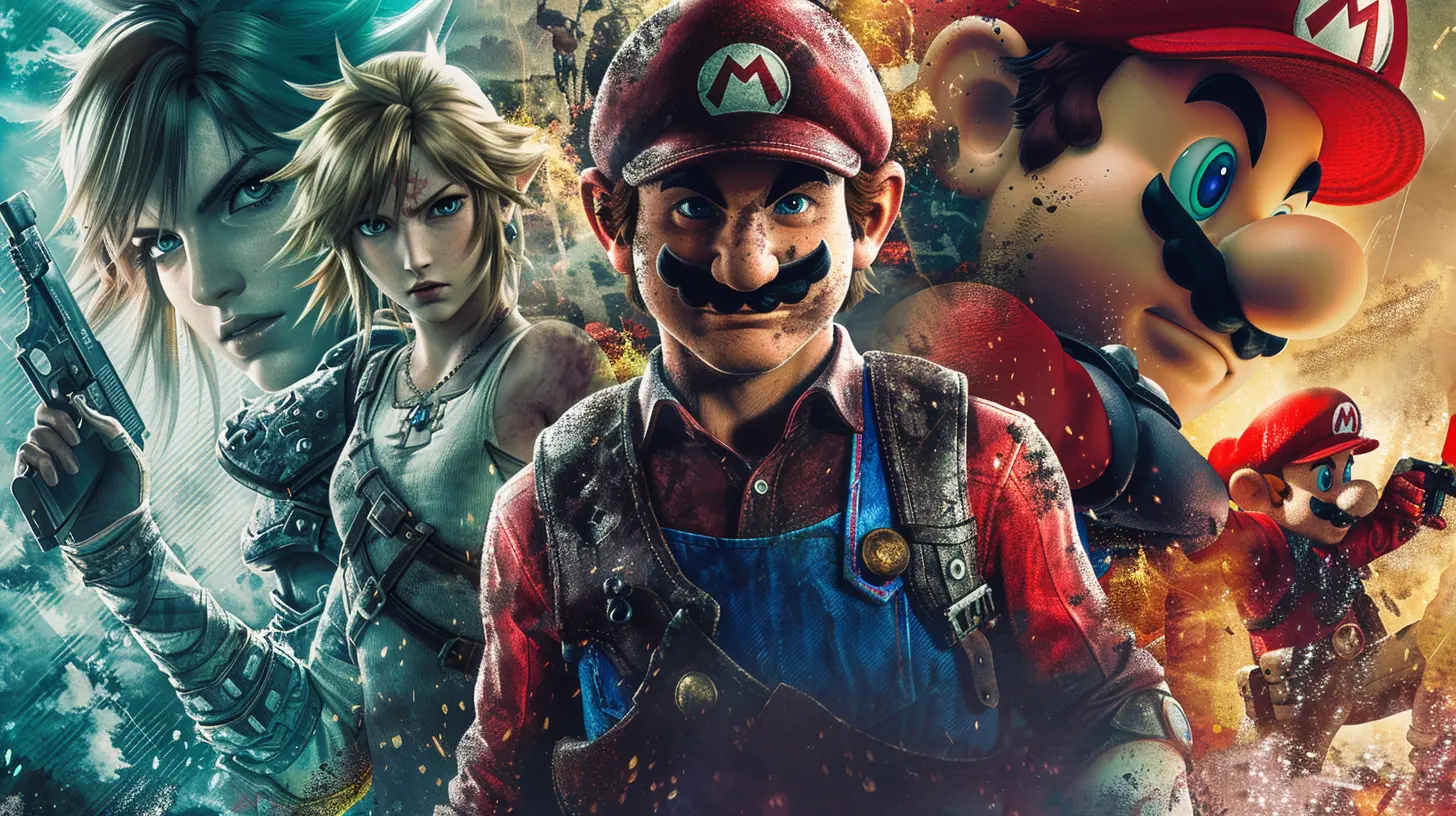Are Competitive Game Developers Catering Too Much to the Pro Scene?
19 June 2025
Let's be honest for a second. We've all been there: booting up our favorite competitive game, only to find that some bizarre patch has nerfed our go-to character to the ground or made some sweeping change that feels like it was designed for the 0.1% of players competing for million-dollar prize pools. Meanwhile, the rest of us – your average Joe with a Gold rank and a dream – are left scratching our heads and wondering, “Who asked for this?”
Well, my fellow gamer, you're not alone. This growing trend raises a spicy question worth digging into: Are competitive game developers catering too much to the pro scene?
Let’s queue up and jump into it!
The Rise of Esports: A Blessing or a Balancing Nightmare?
Over the past decade, esports has exploded. Stadiums full of screaming fans, six-figure Twitch streamers, and prize pools larger than my student loans (and that’s saying something) have become the norm. Pro players are now gaming celebrities, and developers see pro play as their shiny marketing tool.But here’s the kicker – when developers start balancing games primarily around pro play, they often ignore the vast sea of casuals who just want to have fun after a long day of work or school. You know, the people who actually make up most of the player base.
You have to wonder: are devs balancing for viewership and prestige… at the expense of playability and fun?
The Patch Notes Problem: Who Are These Changes Really For?
Ever read patch notes and felt like you were reading an alien language?> “Reduced hitbox activation frame by 2ms and adjusted pixel ratio to standardize across vertical vectors.”
Uhhh… What? Are we still talking about video games or is this a physics thesis?
Here’s what’s happening. A lot of these balance patches and updates are made in direct response to pro play – microscopic changes that make a mile’s worth of difference at the highest tiers but feel irrelevant (or downright confusing) to casual players.
Take any major competitive game: Valorant, League of Legends, Overwatch, Dota 2, you name it. You’ll see dev teams constantly tweaking the meta based on what’s broken in tournaments. But sometimes, what's broken for a pro doesn't matter to a casual.
Balancing around the best players in the world is like designing a car that only Lewis Hamilton can drive efficiently. Sure, it's impressive, but the rest of us are just trying to go on a road trip without crashing into virtual walls.
Skill Gaps and Casual Cracks
Let’s talk player skill for a second. Competitive games naturally have a skill gap – that’s kind of the point. But when a game starts to feel like it’s being engineered for gods among gamers, it stops being fun for everyone else.Think about it: the average player doesn’t have pixel-perfect aim, lightning-fast reflexes, or a five-man squad of sweaty teammates on Discord. Most of us are just trying to get a couple of kills, feel cool, and maybe, just maybe, win a match here and there.
If updates are making changes only top-tier players can even notice, the rest of us are left in the dust. It’s like giving a golf club to a toddler and expecting them to play like Tiger Woods.
The Rise of “Meta Slavery”
Ever heard someone say, “I can’t play that champ anymore, they’re not meta"?Yeah. That’s meta slavery.
When pro-focused balancing gets too intense, the meta becomes the law. Players feel forced to play what the pros play. If your favorite character wasn’t picked in the latest major tournament? Congrats, they just became dead weight in your team’s eyes.
So now, instead of playing what’s fun, you’re pressured to play what’s effective – removing freedom, creativity, and frankly, a lot of the joy that games should have. It turns fun into a formula, and nobody wants to do math when they’re playing a game (unless it’s Math Blaster, of course).
Esports Are a Spectacle, But Games Are Still Games
Don’t get me wrong – esports are amazing. The coordination, the high-stakes plays, the drama – it’s like watching a digital version of the World Cup with dragons and lasers. But should the whole game be designed around making the stage look cool?Games are, at their core, meant to be fun. They’re an escape from the world, a digital playground where everyone – not just the elite – should feel welcome. Designing for the 1% over the 99% is like designing a theme park where only gymnasts can go on the rides. It might look impressive from the outside, but it’s missing the point.
When Games Get Too Sweaty
There’s a reason why so many players burn out or drop games entirely. Too much focus on balance, meta, and "perfect" play can suck the soul right out of a game. It becomes sweaty, competitive, and – dare I say – stressful.And hey, stress has its place. Competitive gaming should have depth. But when developers sacrifice accessibility and enjoyment for the sake of symmetry, it can scare new players away and alienate long-time fans.
Balance is essential, but balance doesn’t always mean equal power. It means equal fun. And sometimes, fun is more important than fairness.
Is a Middle Ground Possible?
Luckily, some devs are waking up to this. Hybrid approaches are popping up more often. Some games now separate casual and competitive queues more distinctly, roll out different balance patches for ranked and pro play, or introduce fun, wacky game modes to give players a break from tryhard central.Take Apex Legends, for example. They’ve started incorporating limited-time modes, balance tweaks for ranked versus pubs, and even respond to casual community feedback (crazy, right?).
So yes, there’s hope! But it requires developers to understand that their audience isn’t just elite players and streamers – it's also the everyday gamer who plays with a controller, maybe sits on their couch with a bag of chips, and doesn’t give a single care about their K/D ratio.
Let’s Talk Money (Because That’s a Thing Too)
It’s no secret that esports brings in the big bucks. Sponsorships, media rights, merch, and international tournaments fill the coffers. So from a business perspective, yes – investing in pro play is logical.But here’s the twist: many of the games that thrive long-term (Fortnite, Minecraft, Among Us) weren’t designed with pros in mind. They were built to be fun first. Esports came later.
That’s a friendly reminder that community comes before competition. Developers who double down on making their games fun, accessible, and welcoming tend to see more growth and longevity than those chasing esports glory.
What Can Casual Players Do?
So where does that leave us? The humble casual crowd. The keyboard warriors and controller clickers who just want to have a good time?Well, for starters, we can speak up. Feedback matters, especially when it’s constructive. Devs pay attention to numbers, forums, and community sentiment. If something doesn’t feel right, say it.
Also, support games that value casual play. Play modes that are designed for fun, not just competitive sweat. Stop sweating over meta and start experimenting again. Be bold – pick the weird hero. Try the off-meta strat. Have a laugh when it fails, and a cheer when it works.
Gaming should be fun, not a spreadsheet.
Conclusion: Who Are Games Really For?
At the end of the day, game developers walk a tightrope between balancing for the elite and designing for the masses. The esports scene is vibrant and powerful, but it shouldn’t dictate every patch, nerf, or new feature.We need games that let pros thrive and let casuals vibe.
So next time a patch drops and your favorite character gets nerfed for “competitive integrity,” remember this: it’s okay to ask for more fun and less microanalysis. Speak up, give feedback, and don’t be afraid to choose the off-meta pick. You might just start the next trend.
After all, legends aren’t born in patch notes – they’re made in-game.
all images in this post were generated using AI tools
Category:
Competitive GamingAuthor:

Tina Fisher
Discussion
rate this article
2 comments
Sari McIlroy
This article raises valid points about the balance between casual and competitive gameplay. It’s crucial for developers to consider the broader community while fostering a thriving pro scene.
September 27, 2025 at 2:41 PM

Tina Fisher
Thank you! Striking that balance is essential for a healthy gaming ecosystem, and your insights highlight the importance of community engagement in shaping the future of competitive play.
Carmel Hamilton
The increasing focus on the professional scene by competitive game developers raises concerns about balancing accessibility and inclusivity for casual players. While fostering a thriving esports ecosystem is essential, prioritizing pro-player needs may alienate the broader community, ultimately jeopardizing the longevity and enjoyment of the games themselves.
June 27, 2025 at 2:31 PM

Tina Fisher
You're right; striking a balance between professional demands and casual player experience is crucial. If developers focus too heavily on the pro scene, they risk alienating the wider community, which can harm both player engagement and game longevity.


